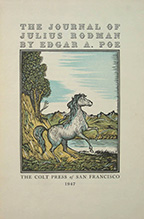Universal tyrant or humanity’s savior?
Through his visions of the future, Leto has witnessed the destruction of mankind, but he has also witnessed the means of avoiding this fate—a master plan he calls the Golden Path. This plan dictates that he rule as a tyrant over humanity, holding them in a period of technological stagnation for centuries to prevent them from self-extinction. On the emperor’s home planet of Arrakis, a.k.a. Dune, one of Leto’s soldiers, an Atreides descendant named Siona, is planning a secret rebellion against the god emperor. But can one really keep a secret from a being who can foresee nearly every occurrence? Meanwhile, Leto repeatedly clones the dead flesh of the Atreides’ top soldier Duncan Idaho to act as commander of his guard. Successive models of these Duncans have served Leto faithfully over the centuries, but perhaps it is only a matter of time before one of these reborn Idahos will look beyond his loyalty to the Atreides and resent his role in Leto’s oppressive regime.
God Emperor of Dune provides an in-depth character study of the fascinating and multi-faceted Leto. At times, however, the problem with the book is that it is too much of a character study and not enough of a novel. While the first three Dune novels felt like an epic and complicated chess game, this one feels more like a debate as Leto constantly engages in cryptic philosophical dialogues with his supporting cast. I can’t even pretend to understand all of what he’s saying on the first reading; at times the dialogue is like an endless succession of zen koans. There are also fewer players in the game for interplanetary dominance than there were in the first three novels. Leto’s regime has disbanded the former feudal aristocracy and largely neutered the Bene Gesserit religious order. The only real threats now are the Tleilaxu, masters of genetic manipulation, and the Ixians, masters of technology. Much of the story’s length takes place in the span of only a few days as Leto exits his citadel for a once-a-decade ritual procession to meet the masses. While the earlier Dune novels were both cerebral and action-packed, this book can only claim to have two of what might be called action sequences, but the final one is a doozy.
Despite such reservations, the Dune saga is still the greatest fictional universe ever created, and the original six books by Frank Herbert are still the best glimpses into this fascinating and expansive world. For anyone who made it through the first three novels, God Emperor of Dune is a must-read. Seeing how Herbert’s grand scheme of humanity’s distant future unfolds will heighten your understanding and appreciation of the first three books and leave you wondering where he could possibly go from here.
If you liked this review, please follow the link below to Amazon.com and give me a “helpful’ vote. Thank you.
https://www.amazon.com/review/R3Q3JXO9GIPXK7/ref=cm_cr_srp_d_rdp_perm
























